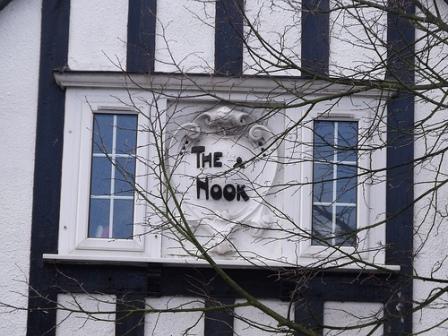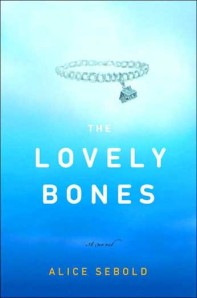 Over the next 2 posts I’m going to look at 3 common problems I see in first novel attempts. Today I’m dealing with possibly the most important. How you hook the reader.
Over the next 2 posts I’m going to look at 3 common problems I see in first novel attempts. Today I’m dealing with possibly the most important. How you hook the reader.
This week I’ve seen a number of posts by writers looking back on what they wish they’d known when they embarked on their first novels – literary agent and writer Weronika Janczuk and writer Krista Van Dolzer. Speaking with my editing hat on, I find there are three major problems that crop up time and time again in the manuscripts of first-time writers – so I thought I’d talk about them here.
Today, I’m going to talk about hooking the reader.
No one is obliged to finish your book – or even read beyond the beginning
When we’re at school we’re taught that if we start a book we must read it all the way to the end. It’s usually a rite of passage when we decide we won’t respect that rule any more, but once we do, we never again stay with a book out of polite duty. We need to be made to read on.
Quite often, first-time novelists have thought of a story, but not about how they will actively reach out to the reader and persuade them to pay attention. They need to approach this on two levels – intellectually and emotionally.
Creating intellectual curiosity
You can reach out with mystery, intrigue, drama, comedy, and atmosphere. Perhaps a body is found in a mysterious situation; a noise is heard every night at a particular time that can’t be explained; a girl fancies the guy who’s going out with her best friend. These hooks generate curiosity, so that the reader thinks, what is going on, what will happen next, what is the answer?
But that’s the easy bit – comparatively.
Creating the emotional connection – engagement
This is much harder and a lot of first manuscripts miss this element. Good stories have a bolt of emotional recognition that binds the reader to the characters. They put you in the characters’ shoes.
 Perhaps she is Everygirl, like the MC in the opening of Alice Sebold’s The Lovely Bones:
Perhaps she is Everygirl, like the MC in the opening of Alice Sebold’s The Lovely Bones:
‘My name is Salmon, like the fish; first name, Susie. I was fourteen when I was murdered on December 6, 1973. In newspaper photos of missing girls from the seventies, most looked like me: white girls with mousy brown hair…’
Sebold goes on to sketch a picture of a recognisable schoolgirl – good at some subjects, disastrous at others, who is just discovering the wider world. These details are not just scene setting, they are the emotional link to who she is – an ordinary girl like us, who was robbed of the chance to grow up.
Here’s another example, the opening of Marcus Sedgwick’s Revolver:
‘Even the dead tell stories.
Sig looked across the cabin to where his father lay, waiting for him to speak, but his father said nothing, because he was dead.’
With these few deft words, we’re in Sig’s shoes.
You don’t necessarily have to launch straight in with the plot. One of my favourite openings is F Scott Fitzgerald’s short story The Cut Glass Bowl:
There was a rough stone age and a smooth stone age and a bronze age, and many years afterward a cut-glass age. In the cut-glass age , when young ladies had persuaded young men with long, curly moustaches to marry them, they sat down several months afterward and wrote thank-you notes for all sorts of cut-glass presents… After the wedding the punch-bowls were arranged on the sideboard … the glasses were set in the china closet … – and then the struggle for existence began. … the last dinner glass ended up, scarred and maimed, as a toothbrush holder…
It’s brilliant, a timeline for a marriage seen through a couple’s wedding presents, and so human. We don’t know who the characters are yet and we haven’t a clue what they are going to do. But on a different level, we know them very well. We feel connected to their problems and their dramas – and we want to read on.
Many first-time writers think about grabbing the reader intellectually – from the outside – but not from the inside. It needs just as much attention – if not more.
Part two of this post will discuss two simple plotting problems that I often see in first novels
In the meantime, thanks to Ell Brown on Flickr for the photo – and guys, share the novel openings that really engage you!

Terrific. Very helpful. Thank you.
Thank you, Julie! Just added your blog to my google reader.
As a writer with a first novel and stack of rejection letters, I appreciate this post! Glad to learn more. Visiting from Red Dress Club.
Hi Amy, welcome in your red dress! It’s not easy when you’ve got a stack of rejections, but we all start out like that so do persevere.
This is great advice, Roz. I’m new to blogging and writing but an old soul so I really appreciate all the help I can get!…:)JP
Thanks, JP. I’m not that new to either but still get a thrill when a new person connects with what I’ve written. Which is the whole essence of what I was talking about with that post. Was it EM Forster who said ‘only connect’?
Such great points, Roz. I think there is a strong, often over-riding emphasis on the hook as something action-oriented–that the only way you can truly “hook” a reader is with slam-bam-physical, when an emotional grab-you can be just as persuasive and compelling. If anything, my stories tend to stress more on the emotional impact, and I have to remind myself to keep the action going as well. A hard balance sometimes, I think.
Hi Erika! Yes, I think the emotional grab isn’t discussed as much, but agree it’s probably more important than any amount of intrigue or action. Instead of straightforward curiosity it’s an indefinable ‘something’ that makes you want to read on.
The opening to THE LEFT HAND OF GOD by Paul Hoffman is brilliant. I can’t remember it properly off hand but it starts; ‘The sancutuary of Redeemers was a lie, no one was ever safe there and no one was redeemed either.’ It goes on to describe the bleakness and brutality of the Redeemers and the world they live in. It’s something that has really stuck with me since I read it and the rest of the novel is as good as the start.
Reaching to a reader emotionally is something I struggle with but the post here has helped me think about my draft in new ways. Thank you
Debbie, thanks for that example. Certainly made me want to go and find that book – which is what it’s all about.
great info here…can’t wait to read more, so I subscribed 🙂 I know my novel has the intellectual grab but after reading this post, I think I need to spend some more time on the emotional connection component. Thank you.
Hooray…thank you for discussing the emotional and intellectual side of hooking the reader! It’s not all thrills, chills and spills.
Thanks, Amanda! It’s such an elusive subject, though. Basically we have to analyse what makes us curious about people – a subject that could be endless.
Fantastic post Roz! I especially loved the opening from the F Scott Fitzgerald story – now that is a superb opening and very original. Hooking the reader is so incredibly important! I always read the first paragraph of any book before deciding whether I continue with it. That first word, first line, first paragraph, first chapter must have a juicy tidbit on the end of the author’s line…looking forward to this series of blogs from you.
🙂
-Kim
Kim, you’re right – first paras must be ultra seductive. I actually don’t judge a book by its blurb – because they’re written as sales documents and often aren’t true to what’s inside. But I do open the first page and listen to the author. That’s what makes me read on or put it down again.
Brilliant, Roz! One of my favourite things to do is read story beginnings. In fact, that’s why I love Amazon’s preview feature so much 🙂 Passing this one along.
Thank you, Roz, this is so valuable and most helpful – not only for first novels. I want to practice on any fiction I write.
Thanks for these tips. As a writer starting my first novel (and I hesitate to even say that) this brings to mind something important to take into account when polishing my characters and storyline. Thank you!
Thanks that was very insightful. I agree, being about to connect with the characters in the story on an emotional level makes a reader more likely to read the whole book. And if they read the whole book then they’re more likely to buy another book by you. So great.
Hi Shaquanda – it’s a tricky balance. There is so much that an opening has to do. And you’re absolutely right – get the quality of that connection right and the reader is yours, for other books too.